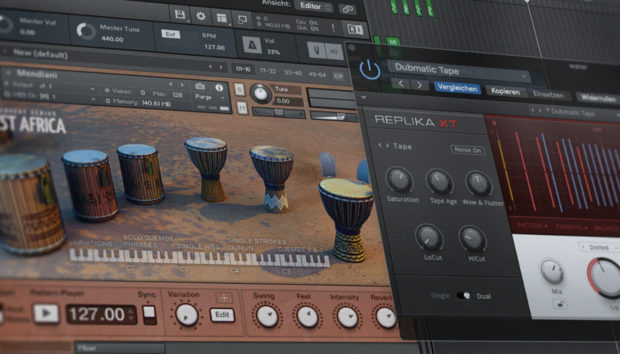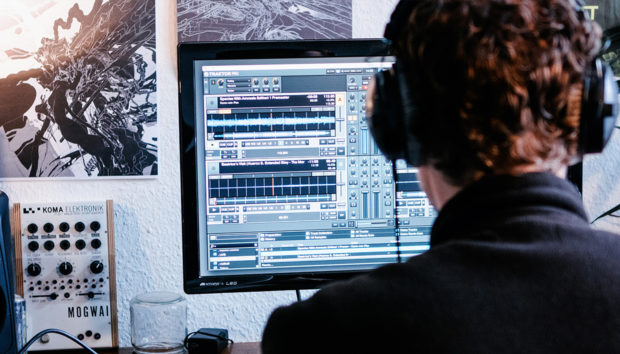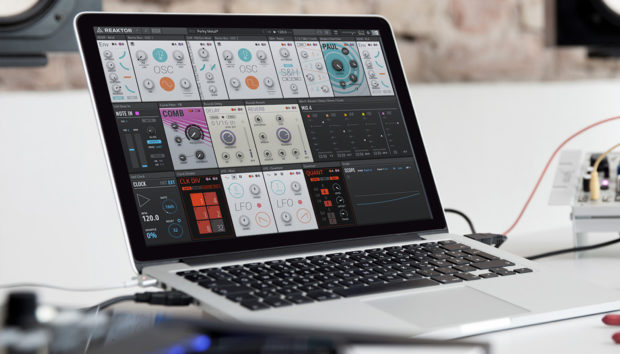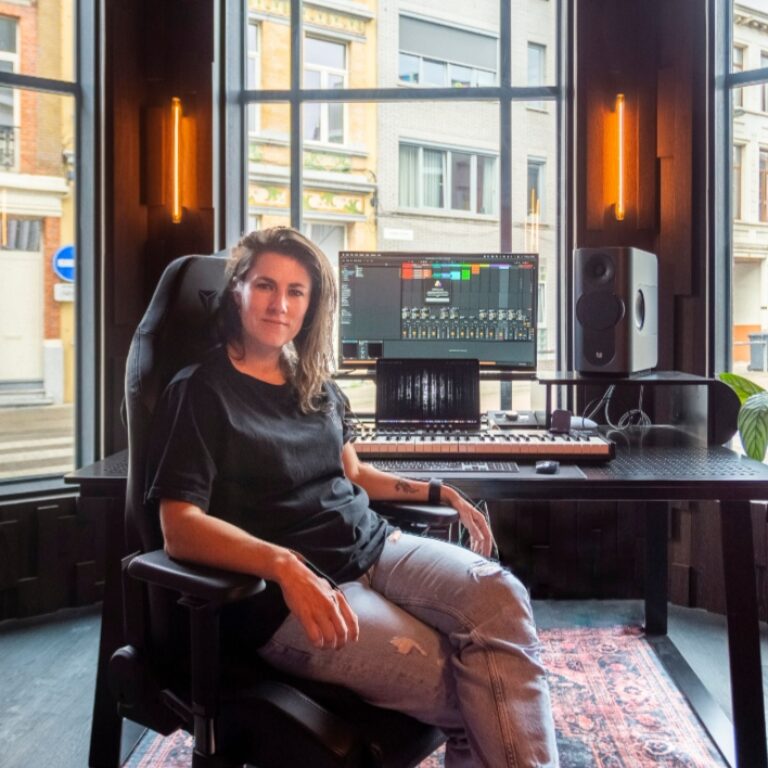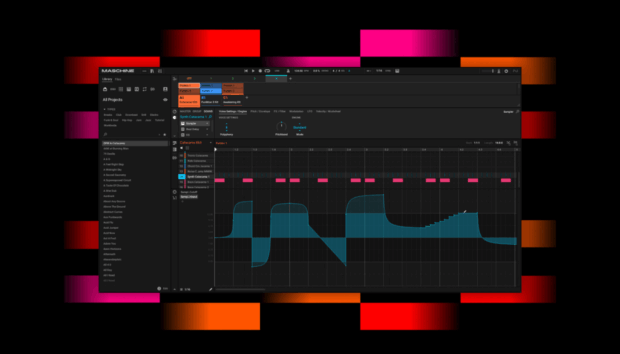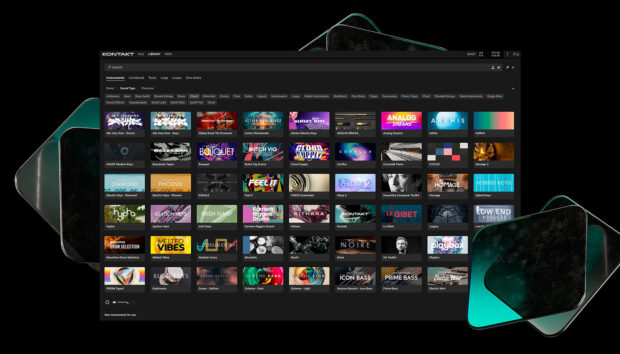Techno lives and breathes through groove, swing, and space, and nothing locks that in better than delay. AM.I gets this on a deep level, leaning into plugins like Replika XT to make it happen.
And the proof is all there – Tomorrowland 2023, launching her Luminate Productions studio in Antwerp, and leading one of the most forward-thinking event series with Luminate by Night.
Even with everything she’s juggling, she took some time to break down how she uses delay, specifically Replika XT, to shape her sound. We got into why delay is essential in techno, the balance between atmosphere and rhythm, and the best modes inside Replika XT for keeping things groovy and driving.
Jump to these sections:
- Delay’s role in techno
- Atmosphere vs. rhythm
- The best delay modes on Replika XT
- Getting delay to sit perfectly in the mix
- How their approach to delay has changed over time
- Using delay with intention
Check out the plugin below to see what it’s capable of before diving into the full interview.
Delay is one of the most defining effects in techno – how do you personally approach using it in your productions?
I treat delay as a fully-fledged creative tool, not just an echo effect. Sure, it can add that classic bounce to percussion, but I love pushing it further to shape the overall soundstage.
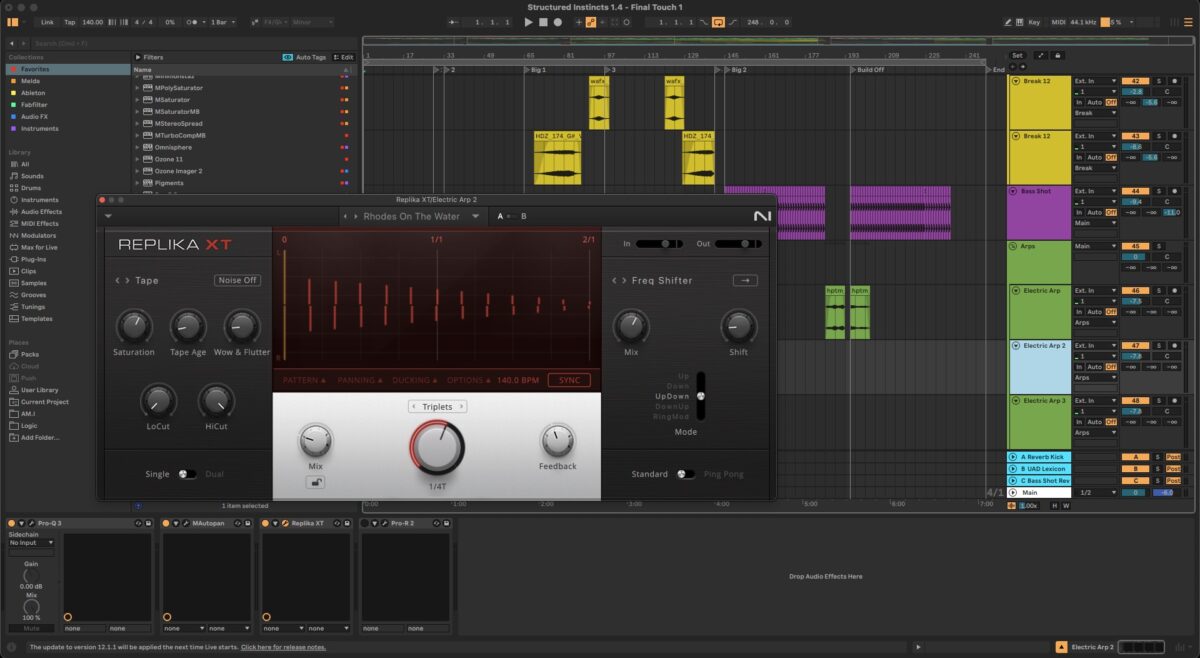
Sometimes I use it subtly – just to widen the stereo image or add that extra bit of interest to a sample. Other times, I’ll create dedicated return tracks where I record the delayed signal, then apply additional effects on top, layer by layer.
It’s a fantastic way to carve out completely new textures or even whole melodic phrases from just one basic sound. The days when delay was only about “more hats” or simple echoes are long gone. Now, it’s about building immersive atmospheres and creating entire rhythmic or melodic ideas that really stand out in the mix.
Pro tip from AM.I: Record, re-sample, repeat. Set up a return track dedicated to delay, then re-record the wet signal onto a new track. Layer additional effects or plugins on that re-sampled audio to craft entirely new instruments or atmospheres.
Do you find yourself using delay for space and atmosphere, or more as a rhythmic tool?
Honestly, I use it for both!
I love cranking the Wet signal all the way up to create this enveloping, almost cinematic atmosphere– especially on a return track, where I can capture and re-record the delayed signal, then layer on more effects. It’s like sculpting an entirely new instrument out of echoes.
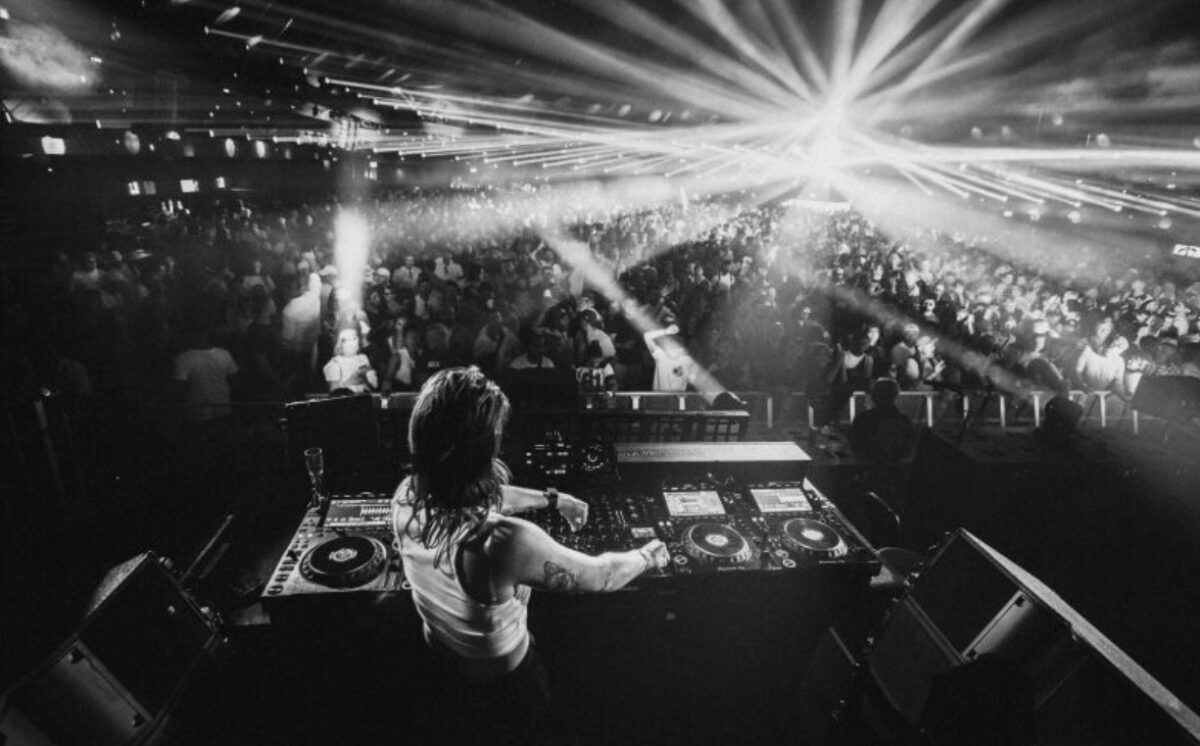
On the rhythmic side, I’m a big fan of experimenting with unsynced delay times in milliseconds; it adds a more human, less grid-locked feel. The extra dimension you can get from the Replika XT’s different modes really helps a sound come alive in the mix, rather than just repeating in a predictable way.
Pro tip from AM.I: Embrace the ‘human touch’ with unsynced times. Try working in milliseconds rather than syncing delays to the grid. You’ll introduce slight timing variations that add a more organic feel to your percussion and synths.
Replika XT has some really versatile delay modes. Do you have a favorite one that works well for techno?
When I first got my hands on Replika XT, I was blown away by how deep the adjustments can go.
While I don’t have a single favorite, I’m drawn to the classic, analog-inspired modes like “Analogue Dual.” They bring this warm, vintage character that sits beautifully in a techno track. The low-end rhythmic presets are also fantastic; they can fill out that 350 Hz–800 Hz range with a ton of tension.
And let’s not forget about the low-cut feature – it’s perfect for precision, especially if you’re pushing the delay through distortion or other effects. Even switching up the delay patterns can inject a totally different rush into the groove. It’s all about experimenting!
What’s a trick you use in Replika XT to make a delay sit better in a mix without it overpowering the groove?
It’s all about balance: I tend to keep the Wet signal quite low – around 13% or so – and use the panning/spread/parallel adjustments to give just the slightest hint of width.
That way, the main groove stays front-and-center, while the delay adds a subtle sense of depth instead of dominating the mix. Another big factor is using the “ducking” feature, which helps prevent the delayed signal from cluttering up the mids or getting in the way of the dry track.
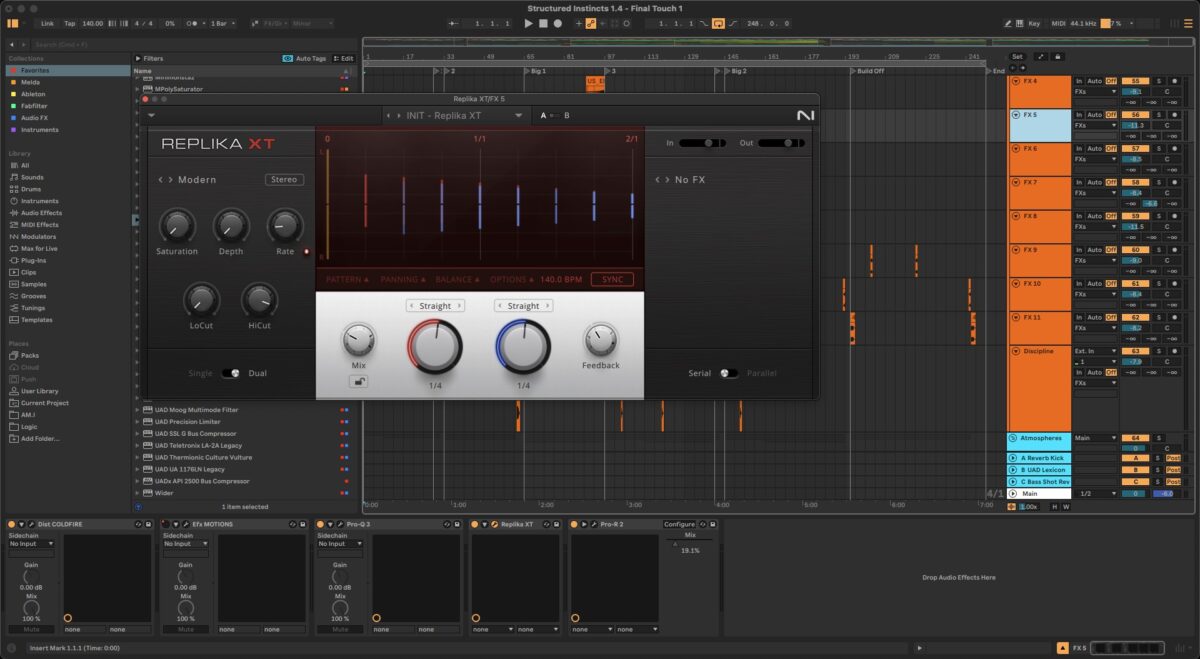
I’ll sometimes even EQ the delayed signal, rolling off excess low end, so the sub and bass regions remain nice and tight.
All these small steps ensure the delay enhances the track and works with the groove– never against it.
Pro tip from AM.I: Tame the low end with ducking & EQ. Use Replika XT’s ducking feature to keep the groove dominant while your delayed elements flow in the background. Rolling off the sub frequencies in the delay ensures the kick and bass remain punchy and defined.
How has your approach to delay changed over time, and what made you rethink the way you use it?
For me, I kinda started it out as a way to enlighten my hi-hats – just a little more bounce or movement. But it quickly escalated into a rhythmic enhancement for other sounds, and once I realized I could use it for more atmospheric, spatial elements as well, the game was on!
I also began exploring how different delay times – especially ones that aren’t synced – could create these organic, human-like textures that really brought the track to life.

Over time, I started seeing delay not just as a plug-in to slap on top of things, but as an integral sound design tool that could drive whole sections of a track. I’d automate the feedback, tweak the filtering, or layer multiple delay passes on a single sound to build tension or introduce subtle variations. This shift in perspective really opened up my creativity.
Instead of simply filling space, I’m letting each delayed element serve a unique purpose in the mix. When 75% of your track’s components each have their own delay personality, it’s like an orchestra of echoes that breathes and evolves throughout the song.
Pro tip from AM.I: Create stereo magic with subtle spread. Keep the Wet mix modest (e.g., around 10–15%) and experiment with panning or stereo spread. Even a slight difference in left/right channels can add huge width without overpowering the core elements. Use it on a return track to widen your bass.
How do you avoid falling into the trap of relying on delay as a crutch instead of using it intentionally?
I think it’s about staying conscious of why you’re adding delay in the first place. If the track is missing something, adding delay might just mask that problem rather than solve it.
So I always ask myself: does this delay genuinely add depth, groove, or atmosphere – or am I just trying to fill a gap?

One way to keep it intentional is to set clear boundaries. For instance, I might decide I can only use one or two dedicated delay sends in the whole project, which forces me to think carefully about each instance.
Another trick is frequently A/B-ing the track with the delay on and off. If the delay doesn’t add anything special, I drop it. It’s also crucial to maintain the balance in the mix. Too much wet signal or feedback can overpower the groove, so I keep checking how each delayed element sits alongside everything else, rather than riding on top or clashing. That way, every delay you hear has a clear, purposeful reason for being there.
Pro tip from AM.I: Limit your delays for intentionality. Restrict yourself to one or two main delay sends in a project. This forces you to be deliberate about when and why you’re using delay, preventing it from becoming a production crutch.
Start creating space and atmosphere with delay
A huge thanks to AM.I for making time in her packed schedule to chat about using delay in techno. The biggest takeaway here is that delay should always be used with intention. It takes up a lot of space in a mix, and while it might sound great on its own, overusing it can easily clutter things.
If it’s not fitting perfectly, it’s better to remove it and let the mix breathe.
Another key point is that delay isn’t just about adding depth or rhythm – it’s a powerful sound design tool. When used intentionally, it can shape the tone and energy of a track in ways that go beyond simple echoes. Replika XT, in particular, brings a gritty, colorful texture that stands out when used sparingly.
Try out some of these techniques in your next track, and see how intentional delay use can transform your mix. Check out Replika XT below.
